
Marquess of Headfort is a title in the Peerage of Ireland. It was created in 1800 for Thomas Taylour, 2nd Earl of Bective.
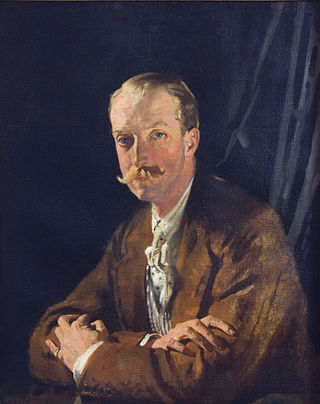
Geoffrey Thomas Taylour, 4th Marquess of Headfort DL, JP, FZS, styled Lord Geoffrey Taylour until 1893 and Earl of Bective between 1893 and 1894, was a British politician and Army officer.

Thomas Taylour, 1st Earl of Bective, KP, PC (Ire) was an Irish peer and politician.
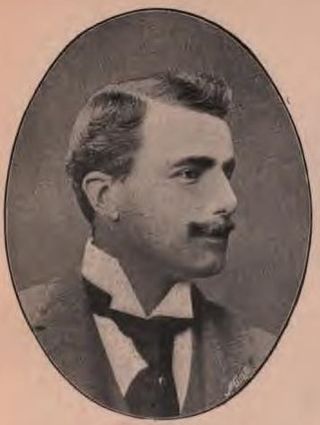
Lord Henry Cavendish-Bentinck, known as Henry Cavendish-Bentinck until 1880, was a British Conservative politician.
Thomas Taylour, Earl of Bective, styled Lord Kenlis until 1870, was an Anglo-Irish Conservative politician.

Thomas Taylour, 3rd Marquess of Headfort KP PC (I) was an Irish peer, styled Lord Kenlis until 1829 and Earl of Bective from 1829 to 1870.

Thomas Taylour, 1st Marquess of Headfort, styled Viscount Headford from 1766 to 1795, and known as The Earl of Bective from 1795 to 1800, was an Irish peer and politician.

Grantley Hall is an English country house located in North Yorkshire, England. It is situated near Grantley, about 5 miles (8 km) to the west of Ripon, on the banks of the River Skell. It is listed Grade II* on the National Heritage List for England, and the Japanese garden at the hall is listed Grade II on the Register of Historic Parks and Gardens.
Read Hall and Park is a manor house with ornamental grounds of about 450 acres (180 ha) in Whalley Road, Read, a few miles west of Padiham, Lancashire, England.

Debden House is a conference centre and campsite located in Loughton, Essex, England. The house is owned and operated by Newham London Borough Council.

Hale Park is a country house and landscape park in the village of Hale, Hampshire. It was designed and built by Thomas Archer around 1715.
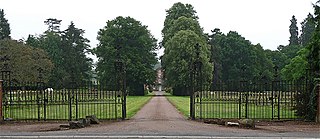
Henley Hall is a building of historical significance and is listed on the English Heritage Register. It was built in about 1610 by the Powys family and then substantially changed in 1772. Additions were again made in the late 19th century. It is a generally a three-storey building in brick with a slate roof. Flanking wings were added at both ends of the original linear building c. 1772 and further major extensions carried out in 1875 and 1907. The hall is surrounded by landscaped and formal gardens covering some 60 hectares. The hall itself is listed grade II* and the orangery, outbuildings, dovecote and Bitterley main gate are listed Grade II. It is situated 2.5 miles (4.0 km) northeast of Ludlow town centre, just off the A4117 road to Cleobury Mortimer. The Ledwyche Brook flows by the estate.

Chorleywood House Estate is a 64.3 hectare Local Nature Reserve in Chorleywood in Hertfordshire. It is owned and managed by Three Rivers District Council, and the declaring authority is Hertfordshire County Council.
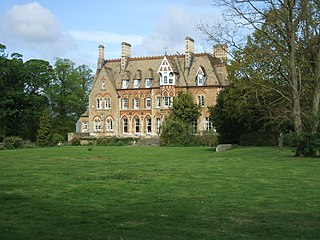
Milton Ernest Hall is a large grade I listed country house in the village of Milton Ernest, Bedfordshire, England. It now serves as a nursing home.
Thomas Geoffrey Charles Michael Taylour, 6th Marquess of Headfort, styled Earl of Bective until 1960, was an Irish peer, aircraft salesman, and politician.

Wadhurst Castle is a 19th-century castellated mansion just to the west of the town of Wadhurst, East Sussex, England, in an elevated position overlooking the countryside to the south. It is a grade II listed building.

Oakmere House is a public house and restaurant in Potters Bar, England, and a grade II listed building with Historic England. The pub is under the management of the Harvester company. The rear of the building faces onto Oakmere Park. The L31 German Zeppelin fell on an old oak tree in the grounds of Oakmere Park after being shot down by Lieutenant Wulstan Tempest on 1st October, 1916. His small plane was slightly damaged on landing back at his base, and he suffered a few injuries. He went next day to Oakere Park, Potters Bar, see what he had done the night before! This famous zeppelin was captained by the German hero of the time, Heinrich Mathy. He and his 18-man crew were all killed, and buried in the Potters Bar cemetery until their bodies were transferred to Cannock Chase many years later. The Potters Bar Museum has a section devoted to this important incident in the aerial battles over England. After the death of Mathy, zeppelin raids decreased.
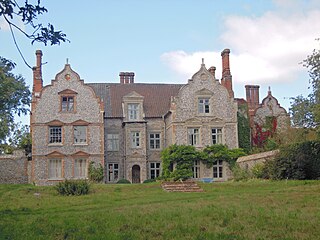
Wiveton Hall is a country house in Wiveton, Norfolk, England. It is Grade II* listed. It was built in 1652 and extended in 1908. However there are remains of an older building in the garden which could date back to 1280. It was the residence of many notable people over the next three centuries and is now the home of the MacCarthy family. The Hall provides holiday cottage accommodation, a restaurant café, a farm and gift shop and has garden tours. The West Wing is available for weddings and other special events.
Hercules Langford Rowley PC was an Irish politician and landowner.

Stanley House in Mellor, Lancashire, England, is a building of historical significance and is Grade II* listed on the English Heritage Register. It was built in the late 16th or early 17th century and was the home of notable people for many years. However, by the early 19th century, the status of the house sank to that of a rented farmhouse. Farming activity continued over the next two centuries with tenant farmers being the occupants. In 1999 the land and buildings were then purchased by Leehand Leisure Ltd, and they converted the building to a hotel and spa which opened in 2003.






















